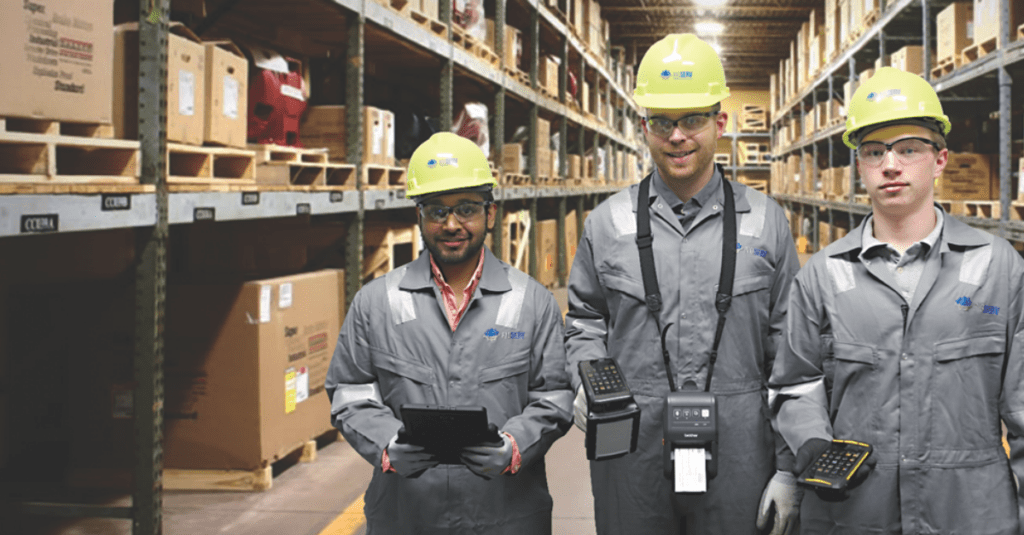Maximize Process Facility Uptime by
Maintaining Accurate Equipment Records
Process and Operations Engineers are responsible for creating and updating piping and instrumentation diagrams (P&IDs) for process flow and equipment involved in a particular facility.
One of the biggest challenges in keeping P&IDs updated is ensuring that they accurately reflect the physical facility as it is built and modified. By keeping P&IDs updated, the engineers can ensure that all equipment is accurately represented and that there are no discrepancies between the actual facility and the diagrams.
Another important consideration is ensuring that bills of materials (BOMs) are accurate. BOMs are used to identify the parts needed for repairs and maintenance. By keeping BOMs updated, engineers can ensure that all parts are available when needed and that there is no loss of production.
To keep BOMs updated, it is important to perform asset walkdowns and asset data capture. Asset walkdowns involve physically inspecting equipment to ensure that it is accurately represented in the BOMs. For example, if a part has been replaced with a newer model, it must be reflected in the BOMs.
Asset data capture involves collecting data on equipment such as manufacturer, model number, serial number, and location. This data can be used to create an accurate inventory of equipment and ensure that all equipment is accounted for.
Asset data enrichment is another important consideration when performing asset walkdowns. By collecting additional data on equipment such as serial numbers, model numbers, origin, operating specifications and limits, and other identifying information, process engineers can enrich their data set and use this information to find the most cost-efficient parts and suppliers.
Asset Management
Best practices for asset walkdowns include:
Plan ahead: Before performing an asset walkdown, it is important to plan ahead by identifying which assets need to be inspected and what data needs to be collected.
Use checklists: Checklists can help ensure that all necessary data is collected during an asset walkdown.
Involve stakeholders: It is important to involve stakeholders such as maintenance personnel and operators in asset walkdowns to ensure that all necessary data is collected.
Use technology: Technology such as mobile devices can help streamline asset walkdowns by allowing data to be collected electronically.
Implement data governance: Data governance policies should be implemented to ensure that all data is accurate, up-to-date, and secure.

Collaboration and Cross-Functional Alignment: Empowered team members are more likely to collaborate effectively with other departments or stakeholders. They can communicate inventory-related insights, collaborate on demand forecasting, and coordinate inventory planning with sales, procurement, and production teams. This cross-functional alignment helps optimize inventory levels and supports overall business objectives.
Cost Optimization: Empowering your inventory management team can lead to cost optimization in various ways. They can identify cost-saving opportunities through better demand forecasting, reduced stockouts, improved inventory turnover, and optimized storage and handling practices. Empowered team members are more likely to explore cost-saving initiatives and continuously seek ways to optimize inventory-related expenses.
Continuous Improvement: Empowered teams are often more open to innovation and process improvements. By encouraging your inventory management team to share ideas, propose new approaches, and experiment with different strategies, you foster a culture of continuous improvement. This can result in enhanced inventory management practices, increased operational efficiency, and a competitive advantage for your organization.

Data management is also critical for keeping BOMs updated. Using an effective data management system will ensure that all data is accurate and up to date. This can help to prevent procurement errors and ensure that the correct replacement parts are available when needed.
In conclusion, regular asset walkdown and data enrichment are essential for keeping piping and instrumentation diagrams updated. It helps to ensure compliance with regulations, optimize process flow, identify potential hazards, maintain accurate bills of materials (BOMs), prevent lost production during repairs or maintenance and enable the supply chain use enriched data to find cost-efficient parts and suppliers.



